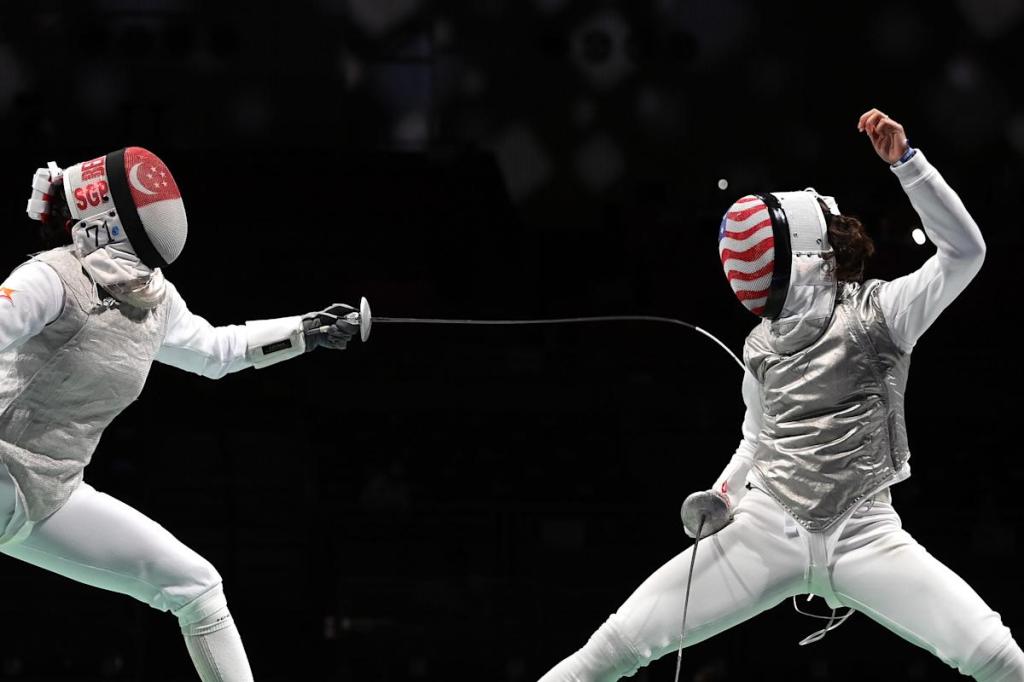
Beginning salute: A blade action performed before a bout or lesson. Indicates respect and good sportsmanship.
En garde: Spoken at outset to alert fencers to take defensive positions. Full commencing phrase is En garde! Prêts? Allez! (‘On guard! Ready? Go!’ For two female fencers, prêts becomes prêtes.)
Advance: The ‘advance’ is the basic forward movement. The front foot moves first, beginning by lifting the toes. The leg is straightened at the knee, pushing the heel out in front. Land on the heel, and then bring the back foot up to en garde stance.
Retreat: The basic backwards movement. Rear foot reaches backwards and is firmly planted, then front leg pushes body weight backwards smoothly into en garde stance.
Lunge: The most basic and common attacking movement in modern fencing. From en garde, push the front heel out by extending the front leg from the knee. Do not bend the front ankle, or lift up on the ball of the front foot. This means that the front foot must move forward prior to the body weight shifting forward. As the front leg extends, energetically push erect body forward with the rear leg. Rear arm extends during forward motion as a counterbalance. Land on the front heel and glide down into final position, with front shin perpendicular to the ground, and both heels on the floor. During this action, the torso should remain relatively erect, and not be thrown forward. Often, the back foot can be pulled along behind during an energetic lunge. It is important, and a fundamental characteristic of the lunge, to fully extend the back leg, obtaining full power from this spring-like extension.
Parry: A simple defensive action designed to deflect an attack, performed with the forte of the blade. A parry is usually only wide enough to allow the attacker’s blade to just miss; any additional motion is wasteful. A well-executed parry should take the foible of the attacker’s blade with the forte and/or guard of the defender’s. This provides the greatest control over the opponent’s blade.
Quarte: Parry #4; blade up and to the inside, wrist supinated. The point is higher than the hand.
Sixte: Parry #6; blade up and to the outside, wrist supinated. The point is higher than the hand.
Riposte: An attack made immediately after a parry of the opponent’s attack.
Counter-riposte: A second, third, or further riposte in a fencing encounter. A counter-riposte is the offensive action following the parry of any riposte.